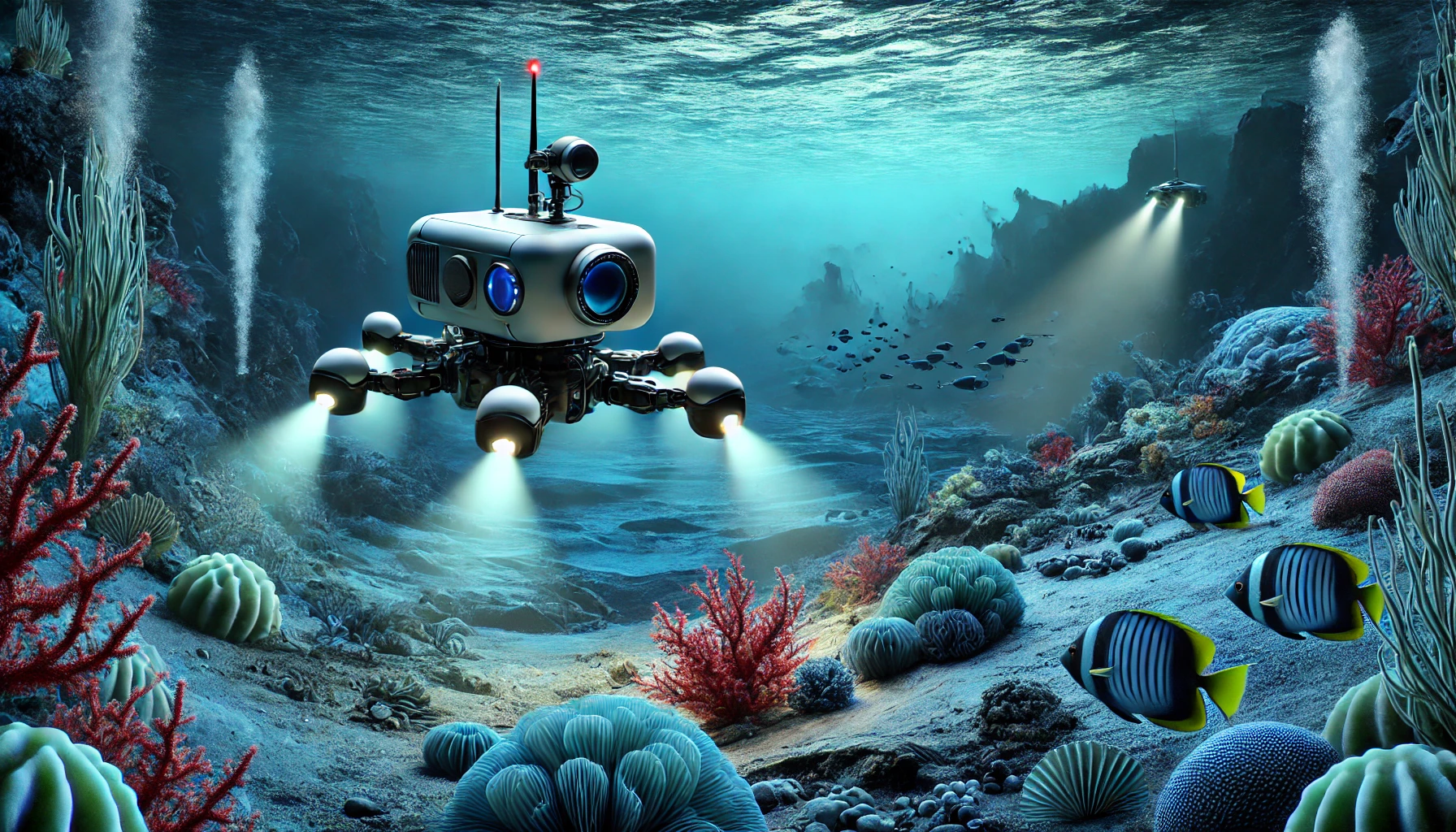Underwater Robotics Making Waves: How Autonomous Submersibles Are Shaping the Future of Marine Research and Ocean Conservation

Diving into the Depths: Meet the Next Generation of Underwater Robots
Let’s face it, the ocean is like that mysterious basement in your house—dark, cold, and full of weird stuff you’d rather not encounter. But where we humans might hesitate, autonomous underwater robots are bravely taking the plunge. From nimble submersibles mapping unexplored ocean floors to precision drones monitoring endangered marine species, the world of underwater robotics is making waves (pun totally intended). These high-tech submersibles are transforming how we study and conserve the oceans, all while giving traditional marine research a much-needed upgrade.
The Fish Are Watching: How Robots Are Revolutionizing Fisheries Management
Ever wonder if fish get stage fright? Well, they might now, because underwater robots are keeping a close eye on them. Autonomous submersibles are helping to manage fisheries by providing detailed data on fish populations, migration patterns, and ocean conditions. Gone are the days of guessing how many fish are in the sea (not literally, but you get the point). These robots can dive deep, stay longer, and collect more precise data than any human could. Startups like OpenOcean Robotics and MarineEye are leading the charge, bringing high-tech solutions to an industry that’s still stuck in the 'fisherman’s tale' era. With real-time monitoring and predictive analytics, these bots are ensuring that overfishing and environmental impacts are kept in check, all while the fish remain blissfully unaware.
Exploring the Abyss: The Role of Underwater Drones in Deep-Sea Exploration
Deep-sea exploration has always been a tough gig—pressure that could crush a submarine, freezing temperatures, and pitch-black darkness. But for underwater robots, it’s just another day at the office. Thanks to advancements in autonomous submersibles, researchers can now explore the ocean’s most remote and hostile environments without putting human lives at risk. These robots are not just floating around aimlessly; they’re mapping the ocean floor, discovering new species, and even studying hydrothermal vents. One standout is the Boaty McBoatface (yes, that’s a real robot) from the UK’s National Oceanography Centre. It’s not just the name that’s cool—this bot can navigate under ice shelves and dive to depths previously unreachable. And the data collected? It’s invaluable for understanding climate change, biodiversity, and ocean health.
Saving the Seas: Autonomous Submersibles and Ocean Conservation
Our oceans are in trouble—pollution, overfishing, and climate change are wreaking havoc on marine ecosystems. But autonomous underwater robots are stepping up to the challenge. Equipped with sensors, cameras, and cutting-edge AI, these robots are monitoring water quality, tracking plastic pollution, and even planting coral. The goal? To provide real-time data that helps conservationists make more informed decisions. Startups like CoralBots are deploying swarms of robots to restore damaged coral reefs, while others are using submersibles to remove marine debris. It’s like sending a Roomba to clean up the ocean, except these bots don’t get stuck on the furniture.
Emerging Startups: Pioneers in Underwater Robotics Innovation
A wave of innovation is sweeping through the underwater robotics sector, with startups at the helm. Companies like Aquabotix and Houston Mechatronics are developing advanced autonomous underwater vehicles (AUVs) that can perform complex tasks, from deep-sea mining to infrastructure inspections. These startups are not just building robots; they’re creating the future of ocean technology. By integrating AI, machine learning, and autonomous navigation, these robots are becoming smarter and more efficient with every dive. And the best part? They’re doing it all without needing a paycheck or lunch breaks.
The Future of Marine Research: What’s Next for Underwater Robotics?
As we look to the future, the potential of underwater robotics seems limitless. With advances in battery life, AI, and materials science, the next generation of autonomous submersibles will be even more capable of exploring and protecting our oceans. Imagine fleets of robots working together to monitor ocean health, track migratory species, and even combat illegal fishing. It’s like an ocean-based version of The Avengers, but with less spandex and more sensors. With more startups entering the market and larger companies investing in ocean tech, the future looks bright—or should we say deep blue?
What Do You Think? Are Robots the Key to Saving Our Oceans?
The advancements in underwater robotics are undeniably exciting, but they also raise some big questions. Will these autonomous submersibles be the superheroes our oceans desperately need, or is there more we should be doing as humans to protect marine life? As these technologies continue to evolve, it’s worth considering how we can balance innovation with sustainability. So, what’s your take? Are you ready to dive into a future where robots rule the seas, or do you think we need to keep a closer watch on these oceanic overlords? Let us know your thoughts in the comments or on Reddit!



